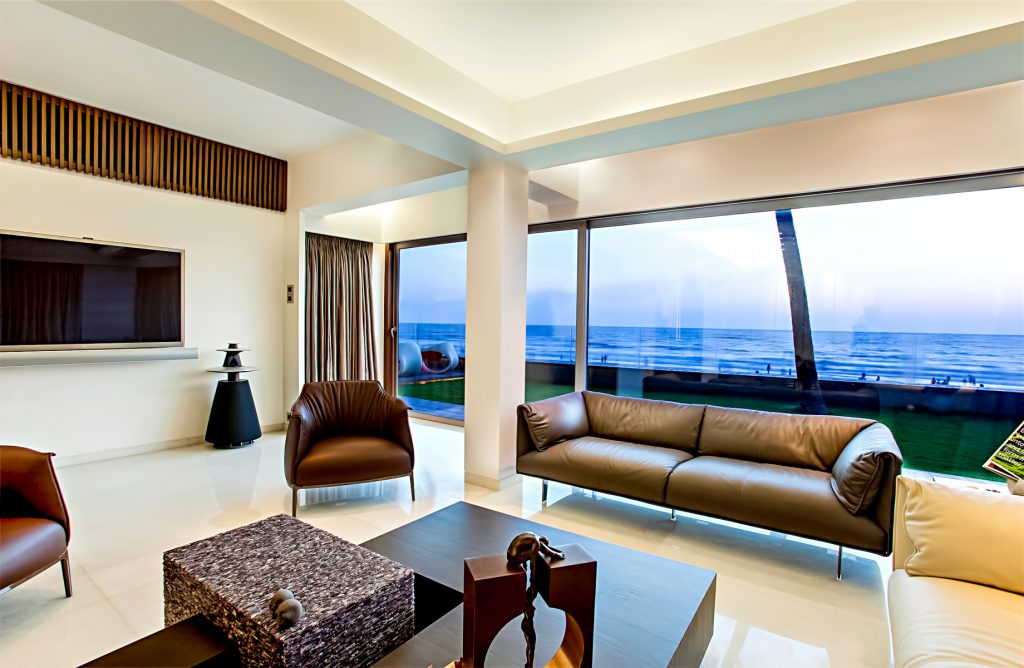Move over, Jodi Apartments: Duplex and triplex homes are the most popular trend in Mumbai. Experiencing ‘villas in the sky’ rather than combining two apartments into a ‘Jodi unit’ is the new norm, particularly among luxury homebuyers looking to upgrade to larger properties.
Advertisements promoting ‘the lavish lifestyle with cost-effective duplex flats in Mumbai’ or a beautifully designed 4 BHK duplex apartment with a private terrace for sale in Bandra.’ It is appropriate for a large family, so do not be surprised. Vertical instead of horizontal spread is the trend, and Mumbai residents are going all out to get a piece of this luxury living.
Jodi apartments, balconies, and duplex housing units
If the Jodi apartment concept, or the trend of balconies, gained traction in Mumbai earlier, it is time for duplex and triplex apartments. Jodi apartments combine two or more housing units into one. Jodi apartments and the duplex/triplex units provide more space and privacy for large families living under one roof. Buyers willing to pay a premium are now looking to improve their lifestyle by moving into duplex or triplex apartments.
Suraj Estate Developers is selling the 42-story Ocean Star Tower built by Prabhadevi.
“We are now offering separate floors for the 50-story project ‘Suraj The Palette’ in Dadar (W). However, we can always change the plan if there is a high demand for duplex units on our upper floors,” said Rahul Thomas, Suraj Estate Developers’ Wholetime Director.
Ocean Star, Tranquil Bay, and Mangrish are the company’s projects, which offer duplex apartments ranging in size from 2600 to 5000 square feet.
“The trend among Mumbai buyers to own duplex and triplex apartments reflects a shift in their tastes. Most high-net-worth individuals value spacious living over price,” he told HT Digital.
Sky bungalows have double-height living spaces.
“We have identified an inclination towards duplex apartments, with individuals desiring ‘sky bungalows’ that feature double height living spaces with a ceiling height of 24 feet in the living room- a feature typically only in villas,” he adds.
HNIs in Mumbai are considering upgrading their lifestyle to duplex and triplex apartments. According to Parth K Mehta, CMD of Paradigm Realty, these homes are investments and lifestyle statements. Prices range between Rs 12.5 crore and Rs 100 crore.
Redevelopment projects meeting the demand for duplex and triplex units
According to Ritiesh Mehta, Senior Director and Head (North and West), of residential services and developer initiative, JJL India, the trend for duplexes and triplexes is becoming more prevalent in Mumbai, particularly as redevelopment activity increases in the city.
“Many of these redevelopment plots are small land parcels, and there is little room to turn a 1000 sq ft into 3000 sq ft apartment horizontally. Rather than Jodi apartments, demand has shifted to vertical units with greater height and larger floor plans,” he said.
“Prices for sea-facing duplex and triplex luxury housing units typically range between 10% and 15% higher,” he said.
Architects believe that Mumbaikars’ design preferences have changed since the pandemic. Many buyers today prefer vertically distributed housing units over horizontally distributed ones. They are currently looking for more floor height.
“Even if you combine two apartments into one Jodi, the ceiling height remains constant. People want more volume in terms of height; they want double height homes with more space and high ceilings, which may not be possible on a single floor,” said architect Hardik Pandit, director of APICES Studio Pvt Ltd, to HT Digital.
The number of duplex and triplex units in a building depends on its number of stories and location. “We initially plan for two to three of these units in a building, but we may decide to increase the number on the upper floors based on demand.”
These units are typically found on the higher floors of a sea-facing building and command a premium in terms of price,” he said.
Will the duplex replace the Jodi apartment concept?
When asked if this concept is expected to replace the ‘Jodi trend in Mumbai, he stated that the demand for ‘Jodi apartments’ will continue because it is age-related. “If a family consists of young children, they may prefer to go in for a duplex or triplex for that bungalow experience within an apartment; however, if the buyers are elderly, they may want to go in for a large ‘Jodi apartment.”
It is also worth noting that duplex and triplex apartments are usually only available in certain areas. “If you have quite a few of these units, sales may slow down due to their high cost.” Furthermore, these will only thrive in certain environments, particularly sea-facing buildings. “Many of these units have design features like viewing decks and terraces,” he says.






